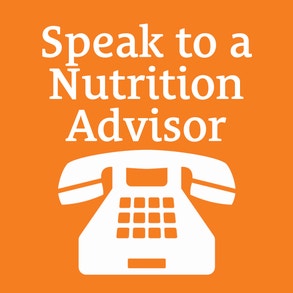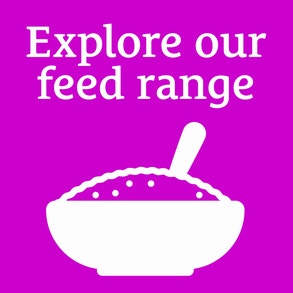
What is energy?
Energy is not a nutrient but is derived from the nutrients in food. In physics we are taught that 'energy cannot be created or destroyed, it can only be changed from one form to another'. Just like the energy derived from coal or oil must be converted to electricity before it can power your television, chemical energy in food must be converted to a form that can be utilised by the body (ATP - adenosine triphosphate) . Starch in cereal grains for example is broken down into glucose which if not used immediately, is stored as glycogen in muscle or liver tissue which can later be converted to ATP.
Energy = Calories
Although the term 'energy' is often associated with performance or behaviour and 'calories' with weight, they are exactly the same thing. Unfortunately this means that it is impossible to find a feed that is high in energy but low calories (or vice versa)! Put simply, calories is a measurement of energy. In human nutrition energy is measured in kilocalories, hence the commonly adopted term 'calories'. In equine diets, energy is measured in 'megajoules of digestible energy' which is often written on feed bags or labels as 'MJ DE/ kg'. 1 MJ of digestible energy equals 239 kilocalories - approximately 1 bag of peanut m&m's!
Is my horse/ pony consuming enough energy?
The easiest way to assess whether any horse or pony is consuming the right amount of energy for their workload is to look at their body condition. Horses/ ponies maintaining a healthy weight/ body condition are consuming the right amount of energy, underweight horses are not consuming enough and overweight horses are consuming too much; regardless of their 'ridden energy' levels or performance!
Energy Sources
The main sources of energy in the horse's diet fibre, oil, sugar and starch (found largely in cereals). Contrary to popular belief, protein is not a primary energy source and is generally only utilised by starving horses in which case lean tissue is broken down to try and meet demand. High levels of protein will not cause excitability or increase the risk of clinical conditions such as laminitis or tying up.
Quick Release vs. Slow Release Energy
Fibre and oil are broken down and absorbed relatively slowing and consequently, are often referred to as 'slow release' energy sources. Sugars and starches are absorbed into the bloodstream more quickly and are often referred to as 'quick release' energy sources.
Tips for choosing the most appropriate energy source
- Oil is approximately 2.5 times higher in energy compared to cereals and starch free
- Avoid high starch/cereal based feeds for ponies, native breeds and those prone to excitability. Instead choose fibre based feeds that if necessary are high in oil to provide additional calories
- Feeds high in starch may help produce a more energetic response in some horses although the reason for this is not fully understood. Equally this strategy may not effective in all horses
- High starch diets are not suitable horses and ponies prone to clinical conditions such as laminitis, colic, tying up and gastric ulcers
Time of Feeding
Glycaemic index is a number applied to foods based on their overall effect on blood glucose. Sugars and starch are broken down and absorbed into the bloodstream relatively quickly, resulting in a higher peak in blood glucose. Whilst it may therefore seem logical to feed lazy horses a starch based meal a few hours before exercise, horses do not directly utilise the energy from their last meal for the next bout of exercise. As he begins to exercise the horse uses a combination of glucose and fatty acids in the bloodstream and stored energy sources and in reality, the time at which you feed is unlikely to have any effect his ridden energy levels.
Lethargy
A lack of ridden energy is often mistaken for a lack of energy in the diet when in truth, horses in good or overweight condition are already consuming enough or too much energy for their current workload. Other factors that may influence energy levels include:
- Temperament
- Fitness
- Weather
- Excess weight gain/ obesity
- Type of work
Always seek veterinary advice if lethargy seems out of character to rule out the possibility of an underlying clinical condition.
Feed & Management Tips for Laidback horses
- Aim to maintain a Body Condition Score (BCS) of 5 out 9 – being overweight can have a significant effect on energy levels
- Feed for your horse’s current BCS – don’t be tempted to increase his feed if he is already scoring a 5 or above!
- Feeds high in starch may help to achieve a more energetic response in some horsess but are not suitable for all horses (see above)
- Keep your horse/ pony as fit as possible – improving his fitness may also help to improve his natural energy levels. Speak to an instructor or trainer for more advice
- Try to maintain a varied workload to prevent your horse/ pony getting bored
- Energy supplements may help but avoid those containing iron. Iron is generally oversupplied in the diet and can be harmful if consumed in excess. Only use feeds and supplements approved by BETA NOPS if you are competing under FEI rules



